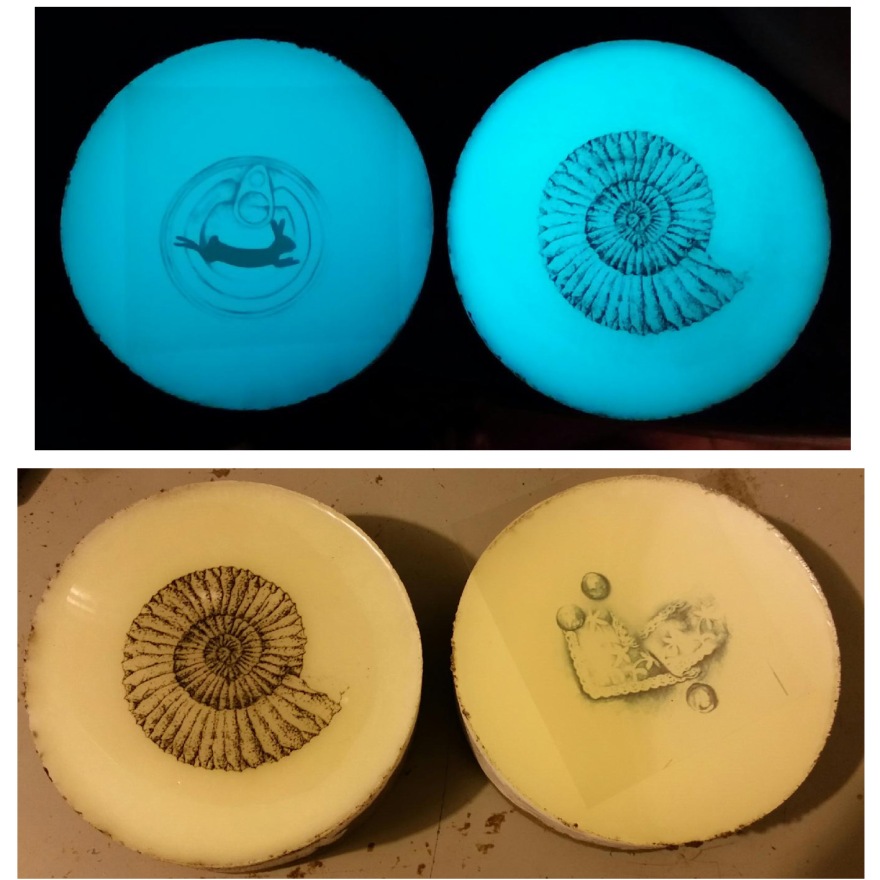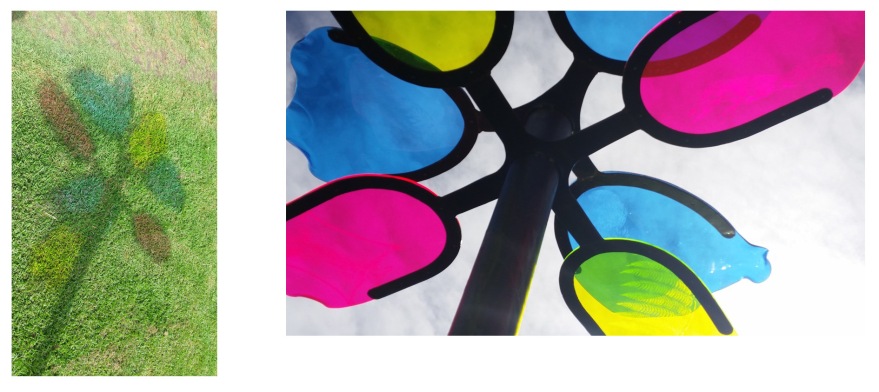Sculpt Ed public art commission and collaboration with artist Jon Dixon

Late last year an EOI was put out by the Great South Leadership Group for a public sculpture that would be installaed on the Port Fairy Rail Trail. This was the second iteration of a program that saw Adnate’s Ngatanwarr Mural installed in Warrnambool last year. http://www.warrnamboolstreetart.com/ngatanwarr-welcome-mural
Jon and I were among eight artists who submitted individual responses to the brief. After an interview process the panel were unable to chose between Jon and I, both of us being seen to offer particular unique strengths to the project. It was for this reason that we were invited to collaborate on the project, and invitation that we both readily accepted.
We were both vaguely familiar to each other, having met about 15 years ago when I ran a small studio gallery with fellow artist Beth Garden in the old Fletcher Jones Factory. Since that time Jon’s sculpture career has gone from strength to strength, as has his brilliant Lyons Sculpture Park, in South West Victoria. It’s worth the drive, check it out:
http://www.lyonssculpturepark.com/
Work began in late January with an insanely tight deadline of March 11. The project was a great experience, we both approached it with the kind of openness, flexibility and creativity that I have come to really enjoy in collaborations.

Jon came across a very cool material called Strotium. Not the scary kind that is found in collapsed nuclear reactors but a benign form that operates as a brilliant “glow-in-the-dark” medium. It doesn’t matter how old you are, we don’t think anyway, there is something so magic and a purely exciting about things that glow in the dark that we thought this was the perfect medium to combine in our resin based “stars”.
Below is the statement that accompanies Charged Landscape. If you happen to visit Port Fairy take a stroll down the rail trail, leaving from Regent Street, and go & find this work for yourself.
This work invites you to activate it. As day becomes night enter the salt marsh trail with your torch in hand, wander forward until you find the eleven ancient rocks embedded with glowing blue stars, once here take your torch and charge the stars until they glow even more brightly still, watch the stars move, hide and unfold as you move your body around this space.
The Charged Landscape
This work has borrowed its landscape in innumerable ways. As collaborating artists our early conversations discussed how the multiple experiences and histories of this single place might be drawn out and articulated. We considered different materials in concert with developing a form that could describe the macro and micro dimensions of this space, stars and fossils emerged as a means to encapsulate this.
The Emu in the Sky
The Aboriginal star constellation the Emu in the Sky quickly became a conceptual and literal image to work within. Unlike most constellations it is comprised of the dark patches where thick clouds of interstellar dust obscure light from the galaxy’s center. This recognition of negative space as well as the sense that some aspects of the world remain hidden from vision provided a poetic lead for this creative process.
The Emu’s head rests next to the Southern Cross, its body stretches across the sky through Scorpio and out past Sagittarius. It is most visible on autumn nights. The Emu in the Sky is common to many First Nations people across Australia from Papunya in the NT to the Kamilaroi and Euahlayi in NSW and Qld to the Ku-ring-gai Chase National Park where the Guringai carved the grand Emu into a cliff top. Closer to home in the Grampians the Gariwerd creation story describes the Emu as the ferocious Tchingle. Locally, the Gundjitmarra also hold the Emu with reverence, unable to step backwards he embodies the power to move forward with strength.
For both artists the Emu in the Sky in the sky reminds us of our place within the cosmos, in the much, much larger time and space in which we all so briefly exist. It allows us to acknowledge and celebrate the eon’s long interconnection of indigenous Australian’s and their country and symbolizes the strong bright future that we must work together to create.
Fossils
Charged Landscape is a transitory space that mirrors the multi-dimensions that exist within it. In this mini stellar nursery we have fashioned a series of stars each of which contains a fossil record of the different histories that intersect across this plane.
Research through the themes of ecology, geology, indigenous history, colonial and contemporary history as well as the railway line itself determined which fossils we would encode.
Although it would take a small book to record all of the information collected through this research, we offer a few starting points which may inspire your own inquiry into the different stories of this landscape:
- This railway line was born of the 1884 Railway Act, colloquially known as the Octopus act for the final tendrils it sent out into each Victorian electorate… By coincidence, a decade before the line’s first sod was turned a diver dynamiting basalt lining the Moyne River found himself accosted by a massive octopus, a terrible devil fish who, once defeated in battle, was measured at eight feet across…
- Encounters with the mythical and terrifying great white shark Big Ben in nearby waters have been reported since at least the 1970s… The ancient megalodon who swam when the sea was above this landscape 10-15 million years ago, however, makes Ben look like a sardine: a single megalodon tooth is bigger than a man’s palm…
- As the coast has ebbed and flowed so too the land has morphed and buckled, the sea’s edge was once 50km further out at the continental shelf’s edge, before that it was joined to Antarctica. More recent history saw the landscape alive with the Newer Volcanics, Charged Landscape’s basalt boulders are taken from the Mt. Ruass lava flow which reached the sea here at Port Fairy.
- Aboriginal people have lived symbiotically with this landscape for tens of thousands of years. Their culture is so continuous here that the Tower Hill explosion of 30,000 years ago is embedded in their oral history. Local stone formed an important part of their technology, stones where used to grind food as well as pigments, used as axe heads and to form channel systems for wild eel farming.
- Colonial women are well hidden in Port Fairy’s history. Shrinking not into history’s shadows, however, is Annie Baxtor who briefly settled in Yambuck with her military husband. This infamous socialite is said to have raced horses against men. She was well known for her fabulous style but was not all pure of heart- she was also known to partake in violent assaults against the Guntjimarra.
- Despite degradation of wetland environments since European settlement they are among Australia’s most valuable environments, salt marshes such as the Belfast Locke are in fact among the highest ecological value in this class. They support a range of unique plant and animal species, including the small burrowing crayfish whose presence is noted by small holes with simple mud chimneys. Along with a pantheon of Australian bird life, the endangered orange bellied parrot and hooded plover also find shelter in this internationally recognized “Important Bird Area”.
We wish to thank the following people who contributed invaluable knowledge, support and resources to this artwork:
Micheal Steel and Bamstone,
Ian Bodycoat & the Port Fairy Rail Trail Committee
Fiona Clarke, Marcus Clarke, Brett Clarke and the “Gundjitmarra Elders Lunch”
John Sherwood and Dereck Walters, Geologists
Jarrad Obst of Glenelg Hopkins Catchment Management Authority
Jordan Lockett, Port Fairy musician & crafter of sea shanties
Marg Banks, local railway historian
Leonie Needham, local historian
Dr. Duane W. Hamacher, Senior Research Fellow in Indigenous Astronomy, Monash Indigenous Centre
We hope you enjoy your encounter with this charged landscape,
Jon Dixon & Becky Nevin Berger, March 2016












